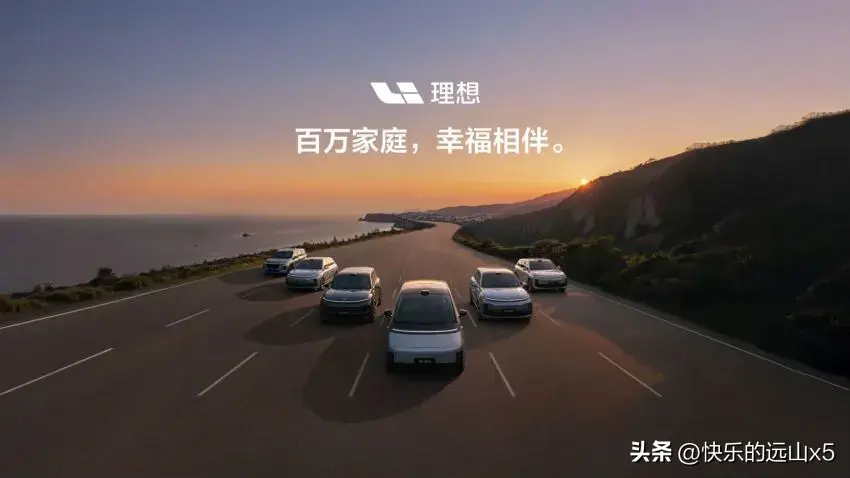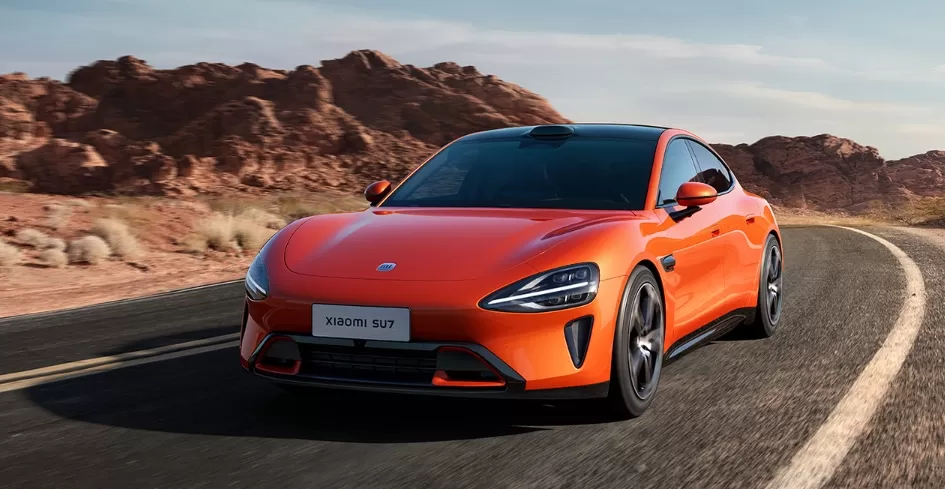Tesla Unveils New Powerwall 3 Expansion Unit, Reducing Installation Time Significantly
Key Points:
Tesla has recently introduced the new Powerwall 3 expansion unit, which is anticipated to cut installation time for home energy storage systems in half. The development of this unit was first announced in April. Powerwall 3’s primary upgrade over its predecessor lies in its power capacity: while its energy capacity remains at 13.5 kWh, its power capacity has increased to 11.5 kW, with Elon Musk claiming it can even peak at 30 kW. This higher power capacity allows for the installation of a single Powerwall, addressing previous limitations. Tesla has leveraged this advantage by releasing a new product—the Powerwall 3 expansion unit, also known as the DC expansion unit. This expansion model is essentially a Powerwall 3 without an inverter, which can be stacked with the standard Powerwall 3. adding 13.5 kWh to the system’s energy capacity with each additional unit. Priced $1.000 cheaper than the standard Powerwall 3. this expansion unit offers users needing more than 13.5 kWh a more cost-effective system. Tesla launched this product in the U.S., stating it can significantly reduce installation time. According to official data, the installation of a system with two Powerwalls using an expansion unit takes only 22 minutes, compared to 45 minutes for two regular Powerwalls. This improvement will save a tremendous amount of time for hundreds of thousands of installations annually. Tesla has also announced that it now produces 700.000 Powerwalls annually. When combined with solar energy, Powerwall offers maximum value, providing an effective way to reduce electricity bills. EnergySage offers a free service to help users easily find reputable, reasonably priced solar installers nearby, whether they’re homeowners or renters.

Opinion:
The introduction of Tesla’s Powerwall 3 expansion unit marks a significant step forward in home energy storage solutions. This innovation not only enhances installation efficiency and reduces costs but also offers users more flexibility and options. As global demand for renewable energy and energy storage solutions continues to grow, Tesla’s initiative is set to drive household energy management toward higher efficiency and cost-effectiveness. From both environmental and economic perspectives, the Powerwall 3 expansion unit is a positive advancement. Environmentally, it supports the storage and use of renewable energy, such as solar power, helping reduce fossil fuel dependency and cut carbon emissions. Economically, by lowering installation costs and improving efficiency, it enables more households to afford and benefit from clean energy, crucial for promoting clean energy technologies. Additionally, Tesla is fostering innovation and competition across the energy storage industry, encouraging other companies to advance technology. Overall, the release of the Powerwall 3 expansion unit represents another important milestone for Tesla in the home energy storage sector, forecasting a future of smarter and greener home energy management.
Kia Debuts Its First Pickup Truck, the Tasman
Key Points:
Kia recently introduced its first pickup truck model, the Tasman, globally and plans to bring it to market in 2025. The new truck offers various power configurations, including a diesel version, while Kia is also developing two new electric pickup trucks expected to reach the U.S. market in the future. The Tasman breaks away from traditional pickup designs, signaling Kia’s commitment to innovation in its electrification transition. The internal combustion engine version will first launch in South Korea and Australia, with multiple trims and configurations. While Kia has not yet disclosed specific details on the electric models, they are expected to be based on Hyundai Motor Group’s E-GMP platform, offering at least a 300-mile range. The upcoming Tasman EV will broaden consumer choices in the electric truck market and help spur its development. As the electric Tasman approaches production, Kia is expected to reveal more information on its features and performance.

Opinion:
The global debut of the Kia Tasman truck represents Kia’s strategic entry into the pickup market while raising new expectations for electric pickups. Based on available information, the Tasman’s design has broken free from traditional pickup constraints, reflecting Kia’s bold innovation in its shift toward electrification. The electric pickup market is developing rapidly, with major automotive manufacturers actively establishing their positions. Kia’s launch of the Tasman underscores its technological prowess and market ambitions in the EV space. Although specific specs for the electric version haven’t been disclosed, the E-GMP platform-based truck is anticipated to deliver at least a 300-mile range, which should make it highly competitive in the electric pickup market. From the perspective of environmental sustainability and energy transition, introducing electric pickups is a significant move by the auto industry in response to the global emissions reduction trend. With advances in battery technology and charging infrastructure, electric pickups are expected to gain wider market penetration in the coming years. The Tasman EV will offer more choices for consumers and drive growth in the electric pickup market. For Kia, the success of the Tasman EV could positively impact its global brand image and market share. In a competitive EV market, Kia needs to secure consumer trust through technological innovation and a superior user experience. The Tasman EV marks a critical step in Kia’s global EV strategy and is an important component of its electrification roadmap.
BYD Sets Third Quarter Record, Electric Vehicle Sales Surge
Key Points:
China’s leading electric vehicle maker BYD achieved record-breaking performance in the third quarter, with significant growth in sales and revenue. BYD’s net profit in Q3 reached $1.6 billion (about 11.6 billion yuan), marking an 11.5% year-over-year increase, while revenue climbed to $28.2 billion (about 201.1 billion yuan), up 28% from Q3 2023. both setting new quarterly records. BYD sold nearly 1.1 million new energy vehicles (NEVs, including plug-in hybrids and pure EVs) in Q3. surpassing the 1 million unit mark in a single quarter for the first time. In September, BYD sold 252.647 plug-in hybrids, an 88% year-over-year growth, setting a record for the seventh consecutive month, with close to 1.6 million plug-in hybrids sold in the first three quarters. For pure EVs, BYD sold 164.956 units in September, with a Q3 total of 443.426 units. Although BYD’s Q3 revenue surpassed Tesla’s for the first time, Tesla still led in EV sales, delivering 462.890 units. Tesla’s gross margin increased to 19.8% in Q3. while BYD’s rose to 21.9% from 18.7% in Q2. BYD is expanding rapidly in the global market, actively entering overseas segments to drive growth after securing a dominant position in China. Earlier this year, BYD introduced its first plug-in hybrid truck, the Shark, in Mexico, followed by launches in Brazil, Panama, Cambodia, and Australia. With the release of luxury models, mid-sized electric SUVs, and electric supercars, BYD expects its growth momentum to continue.

Opinion:
BYD’s third-quarter performance has garnered significant attention both in China’s electric vehicle market and globally. This success is a testament to BYD’s sustained efforts in technological innovation, market expansion, and brand building. BYD’s ongoing investment in core EV technologies, particularly in battery advancements, has strengthened its product competitiveness. The company’s proprietary blade battery technology, known for its high safety, energy density, and cost-effectiveness, has become a key selling point for its EVs. Additionally, BYD’s rapid expansion into global markets highlights the effectiveness of its internationalization strategy. BYD is not only a leader in China but is also making strides in Europe, the Americas, and Asia-Pacific, where it is gaining global brand influence. This early-mover advantage in the NEV sector positions BYD favorably within the fast-growing global EV market. As demand for NEVs continues to grow worldwide, BYD is well-positioned to sustain its growth trajectory and play an increasingly prominent role in the global EV landscape. BYD’s achievements offer valuable insights for the EV industry both in China and globally.
Major News
Volkswagen to Close Brussels EV Plant
Volkswagen Group recently announced it will close its Audi plant in Brussels, primarily producing the Audi Q8 e-tron EV, on February 28. 2025. Previously, Volkswagen had already revealed plans to close three factories in Germany, marking the first time in its 87-year history that it is shutting down domestic plants. The Brussels closure will affect around 3.000 employees, and while management is exploring potential buyers for the plant, union dissatisfaction has sparked protests over management’s reluctance to consider other offers.

Audi announced in September its intent to end Q8 e-tron production and sell the factory, but although there were 26 interested parties, none proposed viable solutions, according to Automotive News Europe. The closure of the Brussels plant impacts local workers and highlights challenges European automakers face in the EV transition. The Audi Q8 e-tron, a premium electric SUV priced around €80.000. has been criticized for its high cost and large SUV market positioning.
Volkswagen faces steep declines in its core market in China and heightened competition from Chinese automakers like BYD in Europe. The factory shutdown plan includes cutting thousands of jobs and reducing the remaining workforce’s pay by 10%. This move is a significant blow to Volkswagen but also underscores the challenging transition traditional automakers face in EV adoption.
Slow EV Transition Drives High Costs, Toyota’s First Production Drop in Four Years
Japan’s largest automaker, Toyota, is encountering difficulties as lower-priced Chinese EV makers such as BYD gain traction globally, impacting Toyota’s competitiveness. In the first half of 2024. Toyota’s global production declined for the first time in four years, dropping 7%






